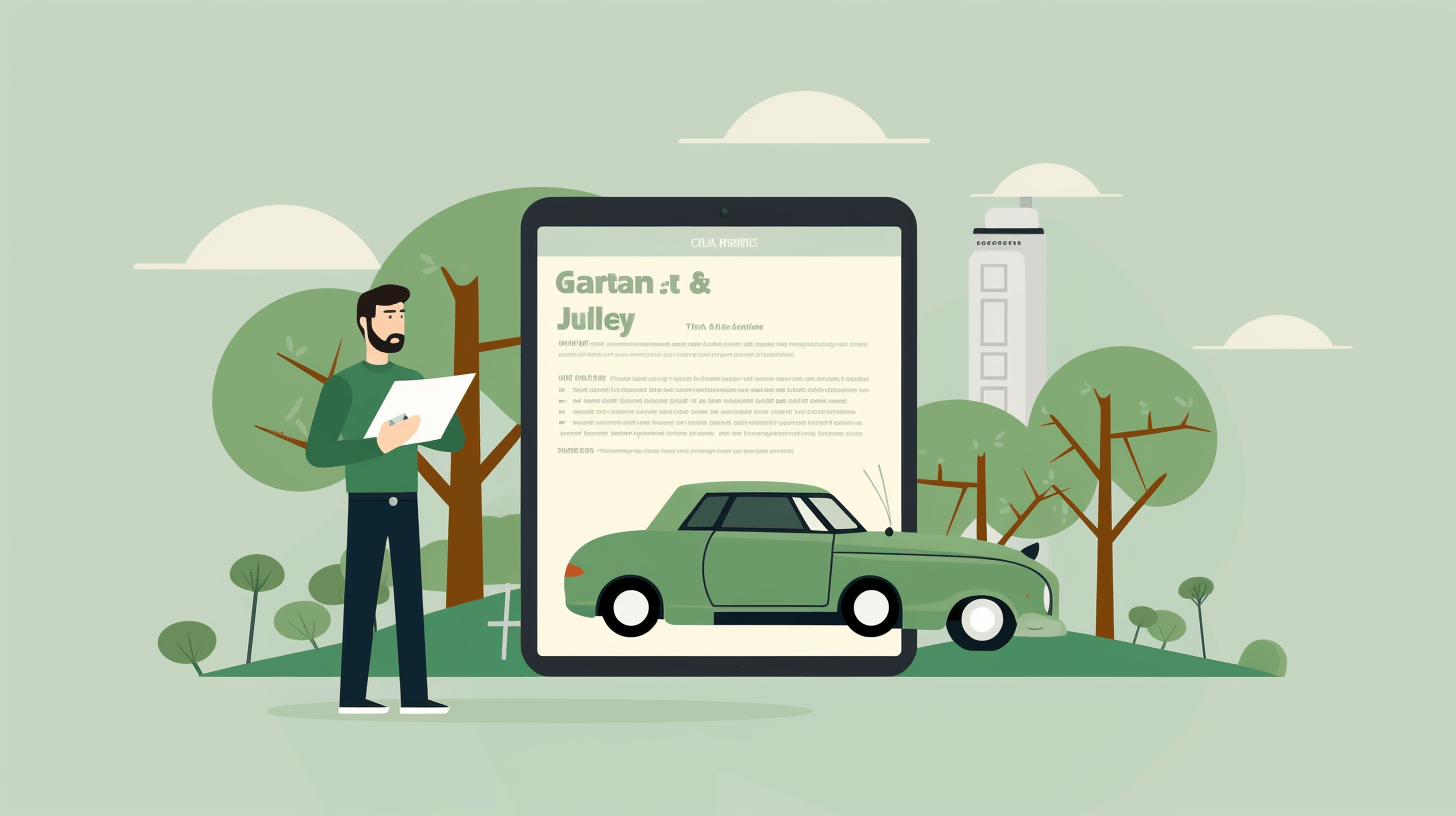Welcome to the world of car insurance! Whether you’re a new driver or a seasoned road warrior, understanding car insurance can be a daunting task. With so many options and factors to consider, it’s important to demystify the complexities and uncover the best car insurance options for your needs.
In this guide, we’ll break down the basics of car insurance, help you determine your insurance needs, provide tips for saving money, explain policy terms and conditions, and give you advice on dealing with accidents and claims. We’ll also discuss how to review and adjust your coverage as your needs change, and provide tips for maintaining a good driving record.
So before you hit the road, let’s dive in and uncover the world of car insurance, so you can drive with confidence and peace of mind.
Understanding Car Insurance Basics
Car insurance is an essential aspect of owning a car. It provides financial protection in case of accidents, theft, or damage to your vehicle. Understanding the basics of car insurance is crucial to ensure you have the right coverage and avoid any surprises. Let’s demystify car insurance by exploring its importance, different types of coverage, and the factors that affect your premiums.
Importance of Car Insurance
Car insurance is not just a legal requirement; it is designed to protect you financially. Here’s why car insurance is crucial:
- Financial Protection: In the event of an accident, car insurance helps cover the costs of repairs, medical expenses, and legal fees. Without insurance, you would have to pay for these expenses out of your pocket, which can be financially devastating.
- Peace of Mind: Car insurance provides peace of mind, knowing that you have coverage in case of unforeseen circumstances. Whether it’s a minor fender bender or a major accident, having insurance can alleviate the stress of dealing with the aftermath.
Types of Car Insurance Coverage
Car insurance policies typically include different types of coverage. Here are some common coverage options:
-
- Liability Coverage: This coverage pays for damages to other people’s property or injuries caused by you in an accident. It is mandatory in most states and helps protect you from costly lawsuits.
- Collision Coverage: Collision coverage pays for repairs or replacement of your vehicle if it is damaged in a collision with another vehicle or object, regardless of who is at fault.
- Comprehensive Coverage: Comprehensive coverage protects your vehicle against non-collision incidents, such as theft, vandalism, fire, or natural disasters.
- Personal Injury Protection: Personal Injury Protection (PIP) coverage covers medical expenses for you and your passengers in case of an accident, regardless of who is at fault. It can also cover lost wages and other related expenses.
Factors Affecting Car Insurance Premiums
Several factors influence the cost of your car insurance premiums. Insurance companies consider these factors to determine the level of risk associated with insuring you. Here are some common factors:
- Driving Record: Your driving history plays a significant role in determining your premiums. A clean driving record with no accidents or traffic violations can lead to lower premiums, while a history of accidents or violations may increase your rates.
- Age and Gender: Young and inexperienced drivers tend to have higher insurance rates due to their increased risk of accidents. Additionally, gender can also affect premiums, with young male drivers typically paying more than female drivers.
- Type of Vehicle: The make, model, and age of your vehicle can impact your insurance rates. Expensive and high-performance cars are more expensive to insure, as they are more prone to theft and have higher repair costs.
- Location: Your location can affect your premiums. Areas with higher rates of accidents, theft, and vandalism may result in higher premiums.
Understanding the basics of car insurance is the first step towards making informed decisions about your coverage. By knowing the different types of coverage, you can choose the right policy that meets your needs and budget. Additionally, understanding the factors that affect your premiums can help you take steps to lower your rates. Stay tuned to learn more about assessing your insurance needs and how to save money on car insurance!
Determining Your Insurance Needs
When it comes to car insurance, it’s important to understand your specific needs and requirements. Determining the right coverage for you can save you from unnecessary expenses while ensuring you’re adequately protected on the road. Here are some key factors to consider when determining your insurance needs:
Assessing Your Driving Habits and Risk Factors
Before selecting an insurance policy, it’s crucial to assess your driving habits and identify any potential risk factors that may impact your premiums. Here are a few questions to ask yourself:
- How frequently do you drive?
- Do you use your car for commuting or pleasure?
- Do you have a long commute, which increases your risk of accidents?
- Is your car parked in a safe location?
By understanding your driving habits and risk factors, you can tailor your insurance coverage accordingly. For example, if you have a long commute or frequently drive, you may want to opt for higher liability coverage to protect yourself in the event of an accident.
Evaluating Your Vehicle’s Value and Condition
The value and condition of your vehicle play a significant role in determining your insurance needs. Consider the following factors:
- Is your car brand new or used?
- How much is your car worth?
- Does your car have any special modifications or features?
If you have a new or expensive vehicle, you may want to consider comprehensive and collision coverage to protect against theft, vandalism, and damage caused by accidents. On the other hand, if you have an older car with low value, you may choose to carry only liability coverage.
Considering Legal Requirements
It’s essential to familiarize yourself with the legal requirements for car insurance in your state or country. Each jurisdiction has specific minimum coverage requirements that you must meet. Some common types of mandatory coverage include:
- Liability coverage: This covers damages to another person’s property or injuries they sustain in an accident that you are responsible for.
- Personal injury protection (PIP) or medical payments coverage: This covers medical expenses for you and your passengers, regardless of who is at fault in the accident.
- Uninsured/underinsured motorist coverage: This provides coverage if you are involved in an accident with a driver who doesn’t have insurance or has inadequate coverage.
Understanding the legal requirements in your area will ensure you meet the minimum obligations and avoid any legal issues.
By assessing your driving habits, evaluating your vehicle’s value, and considering the legal requirements, you can determine the appropriate insurance coverage for your needs. Taking the time to understand your needs will help you make an informed decision and protect your interests on the road. So, get ready to hit the road with confidence, knowing you have the right coverage for you and your vehicle!
Researching Insurance Providers
When it comes to choosing an insurance provider, it’s important to do your homework and thoroughly research your options. This will help you find a reliable and trustworthy company that not only offers competitive rates but also provides excellent customer service. Here are some key steps to consider when researching insurance providers:
Checking Financial Stability and Reputation
It’s essential to choose an insurance provider that is financially stable and has a strong reputation in the industry. Here’s how you can assess their financial stability and reputation:
- Check their financial rating: Look for insurance companies that have high ratings from independent rating agencies like A.M. Best, Moody’s, or Standard & Poor’s. These ratings reflect the company’s ability to meet its financial obligations.
- Evaluate their track record: Research the company’s history and find out how long they have been in business. A company with a long history of stability is more likely to be reliable.
- Consider their customer satisfaction: Read customer reviews and testimonials to gauge the level of satisfaction among policyholders. You can also check online forums or social media platforms to see if there are any negative reviews or complaints about the company.
Comparing Policy Options and Coverage
Each insurance provider offers different policy options and coverage levels. It’s important to compare these options to ensure you choose the one that best suits your needs. Here are some factors to consider:
- Types of coverage: Look for providers that offer the specific types of coverage you require, such as liability coverage, collision coverage, or comprehensive coverage.
- Policy limits: Consider the limits and deductibles offered by different providers. Higher limits may provide more protection but can also result in higher premiums.
- Additional benefits: Some insurance providers offer additional benefits like roadside assistance, rental car coverage, or accident forgiveness. These can be valuable inclusions that add value to your policy.
Reading Customer Reviews (Without Fake Brand Names)
Customer reviews can provide valuable insights into the experiences of others with a particular insurance provider. However, it’s important to be discerning when reading these reviews, as they can sometimes be misleading. Here’s how you can make the most out of customer reviews:
- Look for authentic reviews: Be cautious of generic or excessively positive reviews, as they may be fake or paid for by the insurance provider. Look for detailed reviews that provide specific information about the customer’s experience.
- Check multiple sources: Don’t rely solely on the reviews posted on the insurance provider’s website. Instead, check independent review websites and forums to get a more balanced view of the company’s reputation.
- Consider the overall consensus: Look for patterns in the reviews. If multiple customers mention the same issue or concern, it is likely a legitimate concern that you should consider.
By following these steps, you can gain valuable insights into insurance providers’ financial stability, reputation, policy options, and customer satisfaction. This will help you make an informed decision and choose the right insurance provider for your needs. Remember, taking the time to research now can save you a lot of trouble down the road. Happy hunting!
“Doing your research upfront can help you avoid headaches in the future. Take the time to find an insurance provider that offers the right coverage, excellent customer service, and competitive rates.”
Saving Money on Car Insurance
Car insurance is a necessary expense for every driver, but that doesn’t mean you have to break the bank to get the coverage you need. By following a few simple tips, you can save money on your car insurance premiums while still ensuring that you have the protection you need on the road. Here are some practical ways to save money on car insurance:
Choose the Right Deductible
One way to lower your car insurance premiums is to choose a higher deductible. The deductible is the amount you have to pay out of pocket before your insurance kicks in to cover the rest of the expenses. By increasing your deductible, you take on more financial responsibility in the event of an accident, but you can significantly lower your premium costs. Just make sure to choose a deductible amount that you can comfortably afford to pay if needed.
Take Advantage of Discounts
Insurance companies often offer discounts to policyholders for various reasons. Some common discounts include:
- Multi-policy discount: If you have multiple insurance policies with the same provider, such as home and auto insurance, you could be eligible for a discount.
- Good driver discount: Maintaining a clean driving record without any accidents or traffic violations can qualify you for a good driver discount.
- Low-mileage discount: If you don’t drive a lot, you may be eligible for a low-mileage discount.
- Safety features discount: Cars equipped with safety features like anti-lock brakes, airbags, and anti-theft systems may qualify for discounts.
- Student discounts: Many insurance providers offer discounts for young drivers who maintain good grades or complete a driver’s education course.
Be sure to ask your insurance provider about the available discounts and check if you qualify for any of them. The savings can add up!
Avoid Unnecessary Coverage
While having the right amount of coverage is important, there might be some coverage options that you can do without. For example, if you have an older vehicle with a low market value, it might not make financial sense to continue paying for collision or comprehensive coverage. Assess your vehicle’s value and consider dropping unnecessary coverage to save money on your insurance premiums.
Improve Your Credit Score
Believe it or not, your credit score can affect your car insurance rates. Insurance companies often use credit scores as a factor in determining premiums. If your credit score is low, you may end up paying higher premiums. To improve your credit score, make sure to pay your bills on time, keep your credit utilization low, and review your credit report regularly for any errors.
Shop Around for the Best Deal
Insurance rates can vary significantly from one provider to another. That’s why it’s essential to shop around and compare quotes from different insurance companies. Don’t settle for the first quote you receive. Take the time to research and obtain multiple quotes to ensure you’re getting the best deal for the coverage you need. Online comparison tools can make this process easier and help you find the most affordable options.
By implementing these money-saving strategies, you can reduce your car insurance premiums without compromising on quality coverage. Remember, it’s important to regularly review your policy and reassess your insurance options to ensure you’re still getting the best value for your money.
“Saving money on car insurance doesn’t have to be a challenge. With a little bit of research and the right approach, you can find affordable coverage that fits your needs and budget.”
Understanding Policy Terms and Conditions
Once you’ve decided on a car insurance provider and policy, it’s essential to thoroughly understand the terms and conditions of your policy. This knowledge will enable you to make informed decisions and ensure that you are adequately covered in the event of an accident or claim. Here are some key aspects to consider when it comes to understanding policy terms and conditions:
Coverage Limits and Exclusions
- Every car insurance policy has coverage limits, which specify the maximum amount the insurer will pay for a particular type of claim. It’s crucial to be aware of these limits to ensure that you have sufficient coverage.
- Exclusions are specific situations or circumstances that are not covered by your insurance policy. Common exclusions include intentional acts, racing, and driving under the influence. Reviewing these exclusions will help you understand what your policy does not cover.
Claims Process and Timeframe
- Familiarize yourself with the claims process outlined by your insurance provider. Knowing how to file a claim and the necessary steps involved can help you navigate the process smoothly.
- Pay attention to the timeframe within which you must file a claim after an accident or incident. Missing this deadline may result in your claim being denied.
Renewal Policy and Cancellation Terms
- Understand the terms surrounding policy renewal. Some policies renew automatically, while others require you to take action to renew your coverage. Mark your calendar with the renewal date, so you don’t miss it.
- It’s also important to be aware of the cancellation terms of your policy. Under what circumstances can the insurer cancel your policy? Are you entitled to a pro-rata refund if you cancel your policy before the term ends? Knowing these details will prevent any unexpected surprises.
Remember, if you have any doubts or questions about any aspect of your policy, don’t hesitate to reach out to your insurance provider for clarification. It’s better to be well-informed and confident in your coverage.
Dealing with Accidents and Claims
No one likes to think about getting into a car accident, but unfortunately, accidents can happen to anyone at any time. That’s why it’s important to be prepared and know how to handle the situation if it does occur. In this section, we’ll discuss the immediate steps you should take after an accident, how to file and document insurance claims, and what to expect during the claim settlement process.
Immediate Steps after an Accident
Being involved in a car accident can be a stressful and overwhelming experience. However, it’s crucial to remain calm and take the following immediate steps:
-
- Ensure safety: Check for injuries and move to a safe location if possible.
- Call the authorities: Contact the police to report the accident and provide accurate information about the incident.
- Gather information: Exchange contact, insurance, and vehicle details with the other party involved in the accident. If there are any witnesses, gather their information as well.
- Document the scene: Take photos of the accident scene, including the vehicles involved and any damages.
- Notify your insurance company: Contact your insurance provider as soon as possible and inform them about the accident. They will guide you through the claims process.
Filing and Documenting Insurance Claims
After you’ve ensured everyone’s safety and followed the immediate steps after an accident, it’s time to file an insurance claim. The claim process may vary depending on your insurance provider, but here are some general steps to follow:
- Contact your insurance provider: Call your insurance company‘s claims department and provide them with all the necessary details of the accident.
- Submit required documentation: Gather all relevant documents, such as the police report, photos of the accident scene, and any medical records, and submit them to your insurance company.
- Cooperate with the investigation: Your insurance company may conduct an investigation to assess the liability and extent of damages. Cooperate fully and provide any additional information or documentation they may require.
- Get a repair estimate: If your vehicle was damaged in the accident, obtain a repair estimate from a trusted mechanic or a repair shop recommended by your insurance company.
- Follow the claim process: Your insurance company will guide you through the rest of the claim process, including the evaluation of your claim, assessment of damages, and determination of coverage.
Understanding the Claim Settlement Process
Once you’ve filed your insurance claim, it’s time to understand the claim settlement process and what you can expect:
- Coverage assessment: Your insurance company will review the details of the accident, assess the coverage under your policy, and determine if the damages are covered.
- Damage evaluation: If your vehicle was damaged, your insurance company may send an adjuster to inspect the vehicle and assess the cost of repairs.
- Settlement offer: Based on their assessment, your insurance company will provide a settlement offer. This offer may include the cost of repairs or the actual cash value of your vehicle if it’s deemed a total loss.
- Negotiation (if needed): If you believe the settlement offer is unfair, you have the right to negotiate with your insurance company. Provide any additional evidence or documentation that supports your case.
- Claim resolution: Once you and your insurance company reach an agreement, the claim will be resolved, and you’ll receive the settlement amount.
Remember, every accident and insurance claim is unique, and the process may differ based on the circumstances. It’s important to thoroughly understand your insurance policy and consult with your insurance provider for specific guidance regarding your claim.
Dealing with accidents and claims can be a challenging and emotional process. However, by following the necessary steps, documenting the incident, and understanding the claim settlement process, you can navigate through the process with confidence and get the support you need from your car insurance provider.
Reviewing and Adjusting Your Coverage
Once you’ve obtained car insurance, it’s important to regularly review and adjust your coverage to ensure it still meets your needs. Life circumstances change, and so do your insurance requirements. Here are some tips to help you review and adjust your coverage effectively:
Periodic Policy Review
Take the time every year to review your car insurance policy. This will help you identify any gaps in coverage or areas where you may be paying for unnecessary add-ons. A policy review involves:
- Checking your coverage limits: Make sure the coverage limits are still suitable for your needs. If your financial situation has changed, you might need to increase or decrease your liability limits.
- Assessing your deductibles: Consider the deductibles on your policy. Higher deductibles can lower your premiums, but make sure you have enough savings set aside to cover the deductible in case of an accident.
- Evaluating your coverage options: Review the coverage options available and consider if you need to add or remove any coverage. For example, if you’ve paid off your car loan, you may no longer need comprehensive or collision coverage.
Adjusting Coverage Based on Changing Needs
Life is full of changes, and your car insurance needs can change too. Here are some situations where adjusting your coverage may be necessary:
- Changes in your vehicle usage: If you’ve started using your car for business purposes or if you’re using it less frequently, you may need to update your policy accordingly.
- New drivers: If you’ve added a teenager to your policy or if someone in your household obtains their driver’s license, you’ll need to adjust your coverage to include them.
- Changes in your financial situation: If you’ve experienced a significant financial change, such as getting a promotion or facing a job loss, you may need to adjust your coverage limits and deductibles to reflect your new circumstances.
Reassessing Your Insurance Options
Periodically reassessing your insurance options is essential to ensure you’re getting the best coverage at the best price. Here are some steps to follow:
- Shop around: Compare quotes from different insurance providers. Prices can vary significantly, and you may find a better deal elsewhere.
- Consider bundling: If you have other insurance policies (such as home or renters insurance), consider bundling them with your car insurance policy. This can lead to cost savings.
- Look for discounts: Check if you’re eligible for any new discounts offered by your insurance provider. Some common discounts include safe driver discounts, good student discounts, and discounts for having certain safety features in your car.
- Review customer satisfaction: Read customer reviews and ratings to get a sense of how satisfied other policyholders are with the insurance provider’s customer service and claims process. A reliable and responsive insurance company is crucial in times of need.
Remember, it’s essential to keep your insurance company informed of any changes in your coverage needs or circumstances. By staying proactive and adjusting your coverage as necessary, you’ll ensure that you’re adequately protected and saving money on your car insurance.
Tips for Maintaining a Good Driving Record
Maintaining a good driving record not only helps keep you safe on the road, but it can also have a positive impact on your car insurance premiums. Insurance providers often consider your driving history when determining your rates, so it’s essential to practice safe driving habits. Here are some tips to help you maintain a good driving record:
1. Practicing Defensive Driving
Defensive driving is a skill that every driver should develop. It involves being aware of your surroundings, anticipating potential hazards, and following safe driving practices. By practicing defensive driving, you can reduce the risk of accidents and demonstrate responsible behavior on the road. Some tips for practicing defensive driving include:
- Keeping a safe distance between your vehicle and the one in front of you.
- Being aware of the speed limit and adjusting your speed accordingly.
- Using turn signals and checking your blind spots before changing lanes.
- Avoiding distractions, such as texting or talking on the phone while driving.
- Adapting to weather conditions and adjusting your driving accordingly.
2. Avoiding Traffic Violations and Accidents
One of the easiest ways to maintain a good driving record is to avoid traffic violations and accidents. Traffic violations, such as speeding, running red lights, and improper lane changes, can result in fines, points on your driving record, and increased insurance premiums. Similarly, accidents, whether minor or major, can negatively impact your driving record. Here are some tips to help you avoid traffic violations and accidents:
- Observe and obey traffic laws and regulations at all times.
- Be mindful of speed limits and adjust your speed according to the road conditions.
- Always use your seatbelt and ensure that all passengers are buckled up.
- Avoid aggressive driving behaviors, such as tailgating or cutting off other drivers.
- Stay focused on the road and avoid distractions like eating or grooming while driving.
3. Attending Defensive Driving Courses
Taking a defensive driving course can not only improve your driving skills but may also qualify you for certain discounts on your car insurance premiums. These courses provide valuable instruction on safe driving practices and can help you brush up on your knowledge of traffic laws. While the specific requirements and benefits vary by insurance provider and state, attending a defensive driving course can demonstrate your commitment to safe driving and potentially reduce your insurance costs.
In addition to these tips, it’s essential to maintain a clean driving record over time. Insurance providers typically review your driving history for a certain period when determining your rates, so consistently following safe driving practices is crucial.
Remember, maintaining a good driving record is not only beneficial for your car insurance premiums but also for your overall safety and the safety of others on the road. By practicing defensive driving, avoiding traffic violations and accidents, and staying up to date with defensive driving courses, you can be on your way to having a stellar driving record. Stay safe and enjoy the open road!
Conclusion
In conclusion, understanding car insurance and making informed decisions about your coverage can help you save money and ensure that you have the right protection in case of an accident. By assessing your driving habits and risk factors, evaluating your vehicle’s value and condition, and considering legal requirements, you can determine your insurance needs and find the best policy for you.
Researching insurance providers is essential to find a company that offers reliable coverage and good customer service. By checking their financial stability and reputation, comparing policy options and coverage, and reading customer reviews from trusted sources, you can make an informed decision.
Saving money on car insurance is possible by choosing the right deductible, taking advantage of discounts, and avoiding unnecessary coverage. It is important to understand policy terms and conditions, including coverage limits and exclusions, the claims process, and renewal and cancellation terms.
In the unfortunate event of an accident, knowing the immediate steps to take, how to file and document insurance claims, and understanding the claim settlement process will help you navigate the situation smoothly.
Periodically reviewing and adjusting your coverage based on changing needs is crucial to ensure that you are adequately protected. Additionally, maintaining a good driving record by practicing defensive driving, avoiding traffic violations and accidents, and attending defensive driving courses can help keep your insurance premiums low.
Remember, car insurance is not just a legal requirement, but it also provides financial security and peace of mind. By demystifying car insurance and uncovering the best options, you can save money without compromising on coverage. So, take the time to educate yourself, compare policies, and make smart decisions about your car insurance. Drive safely!
Frequently Asked Questions
- What are the different types of car insurance coverage?The different types of car insurance coverage include liability coverage, collision coverage, comprehensive coverage, uninsured motorist coverage, personal injury protection (PIP), and medical payments coverage.
- How can I save money on car insurance?You can save money on car insurance by comparing quotes from different insurance providers, maintaining a good driving record, opting for a higher deductible, bundling multiple policies, and taking advantage of discounts offered by insurance companies.
- What factors affect car insurance rates?Several factors affect car insurance rates, including your driving record, age, gender, location, type of car, credit score, and the coverage options you choose.
- Do I need car insurance if I don’t own a car?If you frequently drive a car, even if you don’t own it, you may still need car insurance. It is recommended to have non-owner car insurance to protect yourself in case of accidents or liability claims.
- What should I consider when selecting car insurance?When selecting car insurance, consider factors such as coverage options, deductible amount, premium cost, customer reviews, claims process, and the financial stability and reputation of the insurance provider.










